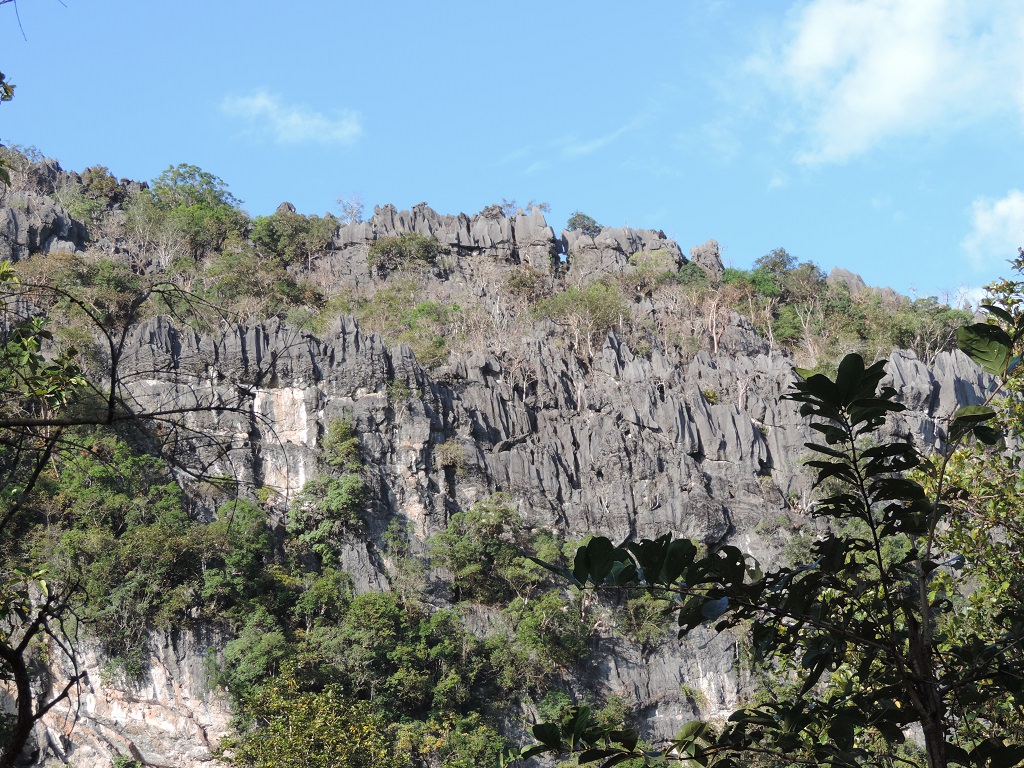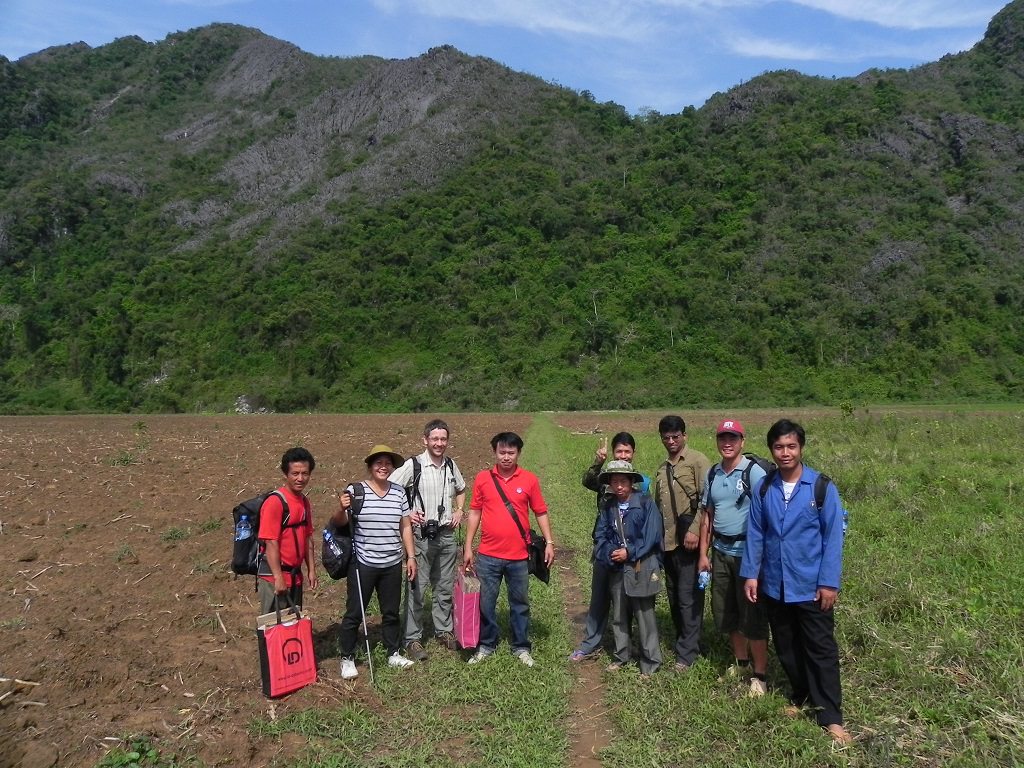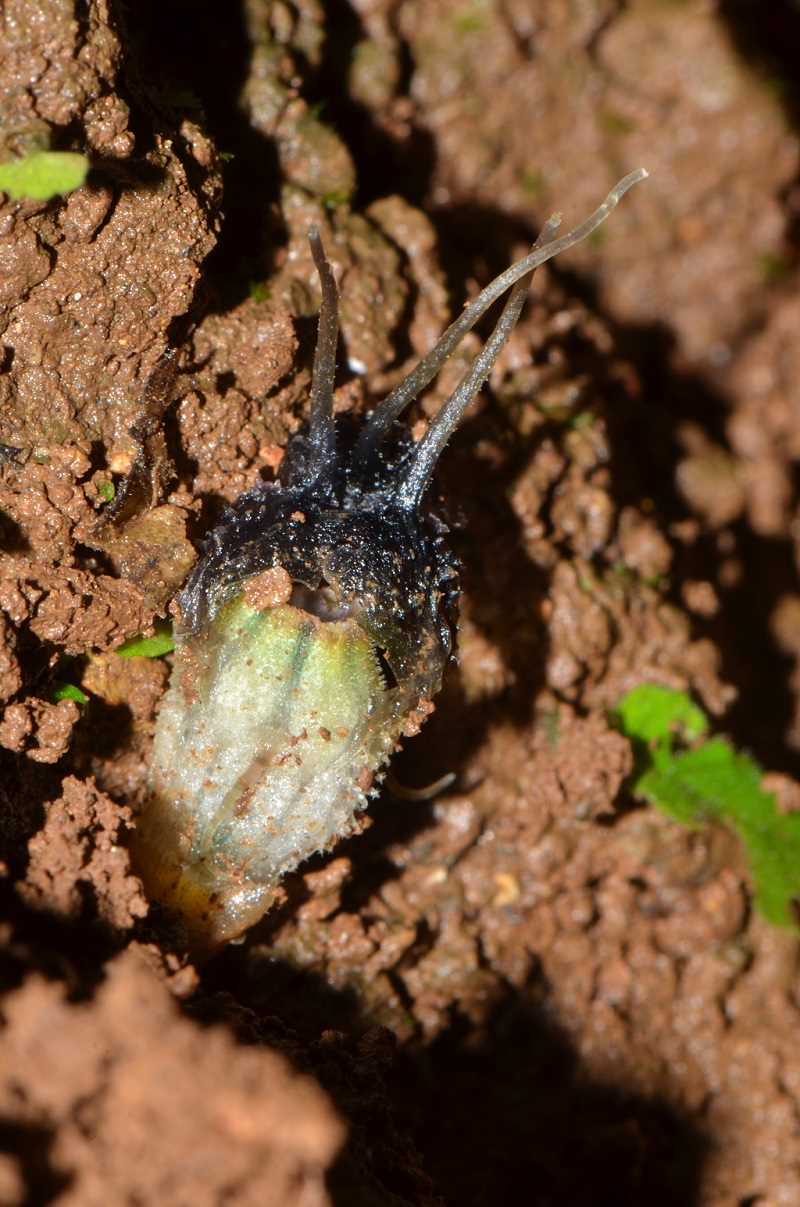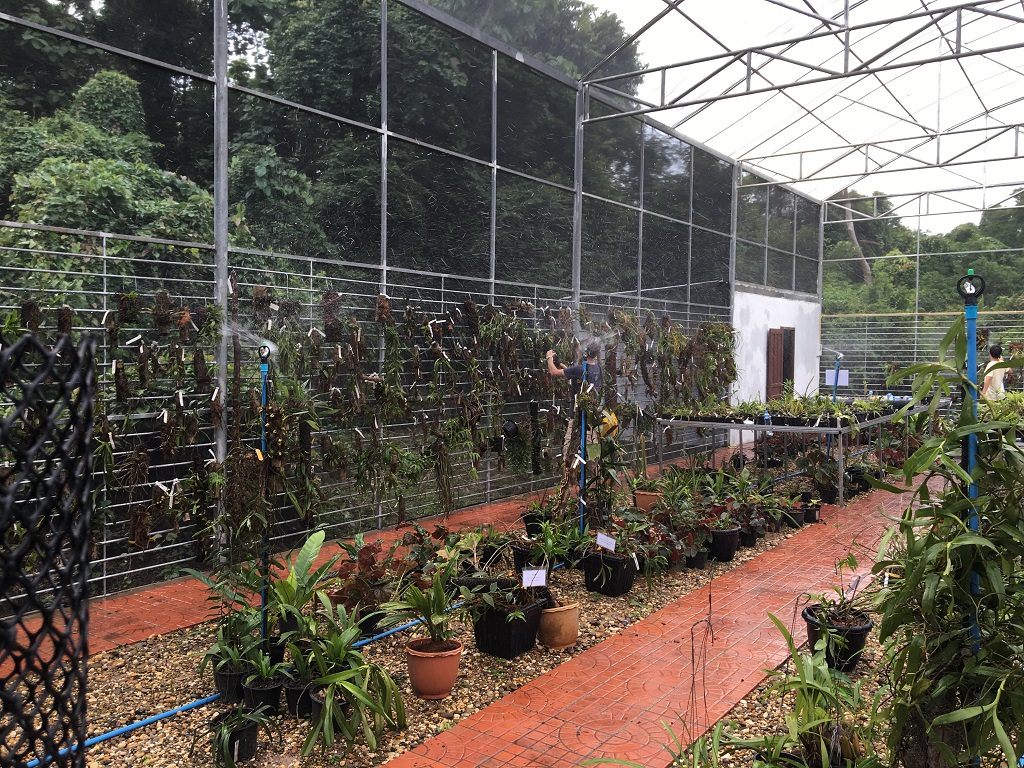Lao orchid surveys reach new milestone
The People’s Democratic Republic of Laos retains some of the most extensive and best preserved limestone vegetation of the Indo-Burma Biodiversity Hotspot, and yet its flora is among the region’s least studied. Mounting pressure on the country’s natural resources as a result of mining, plantation forestry, agriculture and poaching means that there is now an urgent need to raise awareness and build capacity to ensure better conservation of its biodiversity.
Limestone vegetation in Nakai Protected Area, Khammouane
KFBG established a partnership with the Ministry of Science and Technology (MOST) of the Lao Government in October 2014 with a view to carrying out joint biodiversity surveys and capacity building of local staff. Emphasis has been placed on gaining an understanding of the conservation needs of the country’s orchids because these ecologically specialised but commercially valuable plants are highly threatened by over-collection for the horticultural and medicinal plant trades. It is hoped that orchids can serve as a flagship for the conservation of other organisms in Laos.

KFBG's Flora Conservation Department staff working closely with local government officials, botanic garden staff and university students.
To date, five expeditions have been led by KFBG’s Flora Conservation Department. Exploration of one particularly biodiverse karst landscape in central Laos led to the documentation of a staggering 135 orchid species within a survey area of a mere 4.71 Km² (by comparison, Hong Kong harbours 133 species within ca. 1,000 Km²), nine of which represented new records for the country. To add to our excitement, a small, achlorophyllous plant belonging to the non-orchid genus Thismia that was found in the area proved to be a species new to science. Based on our findings, we recommend consideration of this limestone area for recognition as one of the country’s Key Biodiversity Areas (see Further Reading). In parallel to the field surveys, our staff have conducted workshops, lectures and training sessions on topics covering ecology, conservation, horticulture and living collections management for the benefit of local government officials, botanic garden staff and university students.

Thismia Nigricoronata

Ex Situ Orchid Conservation Nursery
A major milestone of this initiative was the construction of an orchid nursery for the ex situ conservation of native orchids within the grounds of the Biotechnology and Ecology Institute (BEI), which is managed by MOST, in Vientiane. The nursery presently maintains a collection of over 450 orchid species predominantly from central and northern Laos.
Further reading
Kumar P, Gale SW, Schuiteman A, Bouamanivong S, Fischer GA (2016). Identifying orchid hotspots for biodiversity conservation in Laos: the limestone karst vegetation of Vang Vieng District, Vientiane Province. Journal of Threatened Taxa 8: 9397–9417, doi: 10.11609/jott.2826.8.12.9397-9417.
Link: http://threatenedtaxa.org/index.php/JoTT/article/view/2826/3819

